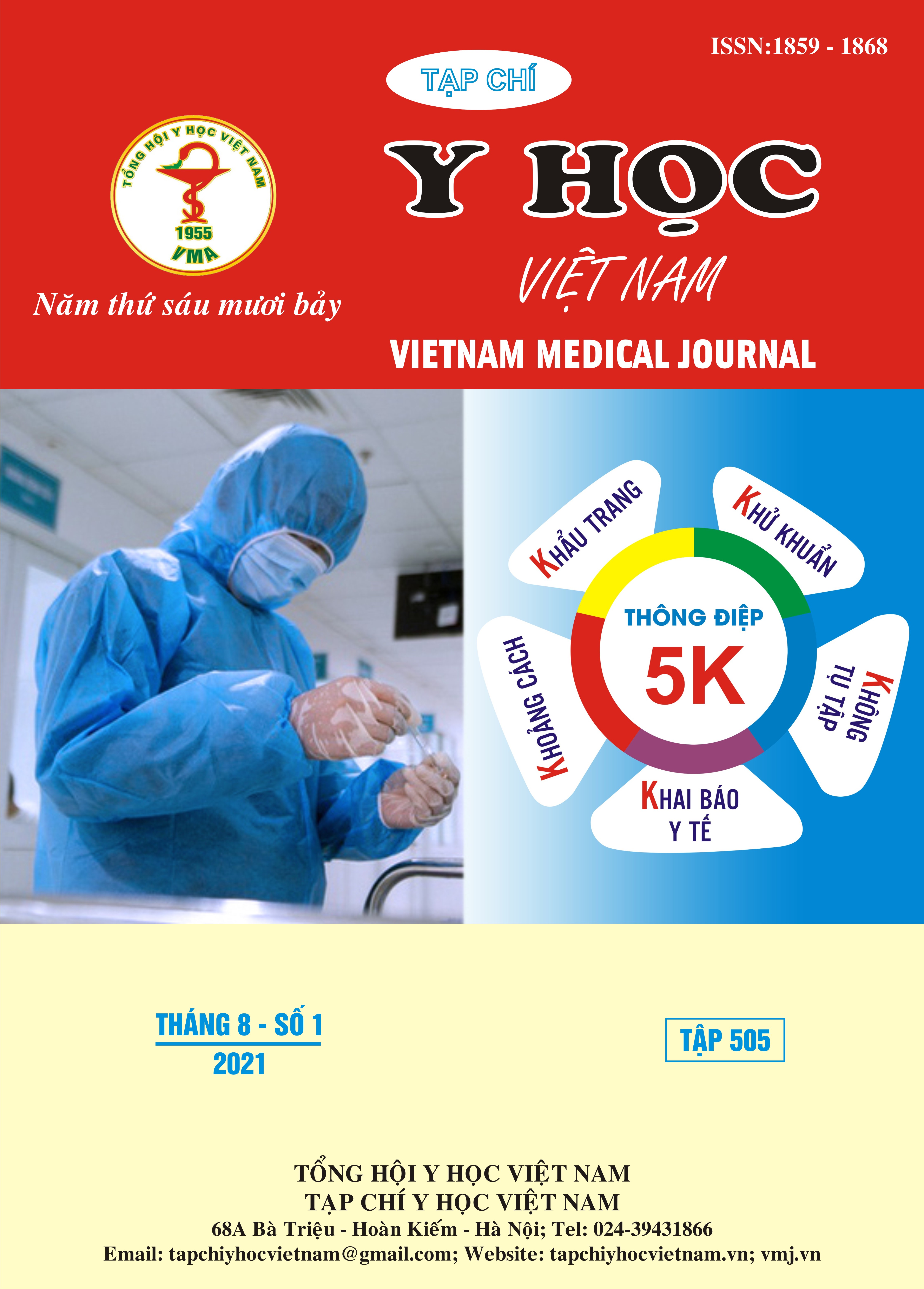EVALUATION OF LOCAL TISSUE USED IN SCALP DEFECT RECONSTRUCTION FOLLOWING CANCER TUMOR RESECTION
Main Article Content
Abstract
Objectives: This study will describe the clinical features and introduce a classification of the scalp defect after cancer resection; evaluation of the surgical effectiveness of scalp defect treatment by local tissue. Subjects and methods: 25 patients with scalp defects following cancer tumor resection are treated by reconstructive surgery with local flaps; Non-controlled clinical intervention, prospective study. Results: The main cause is squamous and basal cell epithelial cancer; type scalp defects more than 20 cm2 following cancer tumor resection has been covered by using local flap combined with skin grafting accounts for 52%. The good short-term results were 68%; the good far results were 80%. Conclusion:The most common scalp lesions are the apex, apex - occipital and temporal regions, with moderate and large defects accounting for 72%, with 28% of deep infiltrates (sclera, bone, meninges). Direct closure with small defects (<5 cm2) and the use of random skin flaps with medium defects (5-20 cm2) are completely appropriate. Superficial temporal artery or occipital artery pedicle combined with split skin graft to cover the flap for large defects (>20cm2) is a useful and safe option, giving the best results especially for the group of elderly patients has many underlying pathological factors, their health status is not guaranteed for other methods such as skin expanding, microsurgery.
Article Details
Keywords
Scalp defect, scalp cancer, superficial temporal pedicle flap, occipital pedicle flap
References
2. Nguyễn Huy Phan (1999), Lịch sử phát triển kỹ thuật vi phẫu thần kinh trên thế giới và ở Việt Nam.
3. Trần Thiết Sơn (2007), Nhận xét các kết quả tạo hình khuyết lớn da đầu.
4. Archontaki M., et al (2009). Giant Basal Cell Carcinoma: Clinicopathological Analysis of 51 Cases and Review of the Literature. Anticancer Research 29: 2655-2664.
5. Cherubino M., et al. (2013). A New Algorithm for The Surgical Management of Defects of the Scalp. ISRN Plast Surg, 2013, 1-5.
6. Cleyton .D. Souza (2012). Reconstruction of large scalp and forehead defects following tumor resection: personal strategy and experience – analysis of 25 cases. Rev Bras Cir Plást. 2012;27(2):227-37.
7. Keck M, et al (2012). Primary cutaneous adenoid carcinoma of the scalp. GMS Interdiscip Plast Reconstr Surg DGPW. 2012;1:Doc04
8. Onishi K., et al. (2005). Repair of scalp defect using a superficial temporal fascia pedicle VY advancement scalp flap. Br J Plast Surg, 58 (5), 676-680.


